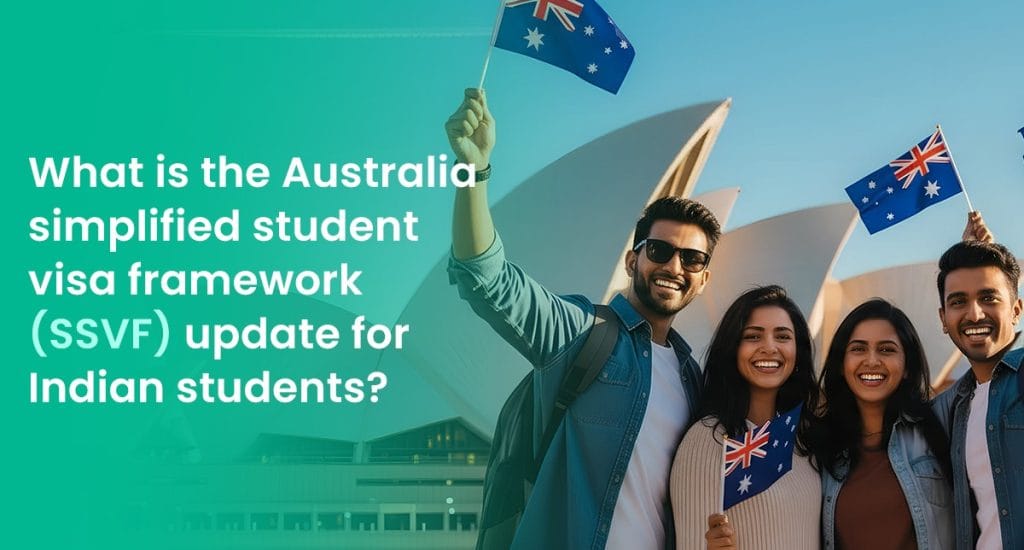Blog

What is the Australia simplified student visa framework (SSVF) update for Indian students, and what does Level 2 status mean?
For students considering studying abroad in Australia, it is essential to be aware of the current student policy environment to prepare in advance. Australia Simplified Student Visa Framework (SSVF) is the underlying system that oversees processes such as documentation for studying abroad. For Indian students seeking to study abroad, a student visa is a key requirement.
Here, we will explore what SSVF is in detail, the definition of evidence levels, and the current status of India, in addition to practical tips for students to gain a complete understanding of the student visa framework in Australia.
Australia Simplified Student Visa Framework: What You Need to Know?
Australia introduced the SSVF to replace multiple visa subclasses in 2016. This initiative was launched with the idea of creating a single student visa for all full-time international students and a unified risk framework to support this. If you are planning to study in Australia, you will be asked to provide evidence of financial capability and English language proficiency as part of this framework. The risk ratings are based on the country of citizenship and the education provider. Lower risk levels require only a few documents in comparison to high risk levels, where more scrutiny is essential.
SSVF Visa Level System Explained
It is vital to note that the levels are assigned for both countries and providers. There are three levels concerning student visa frameworks:
- Level 1 (low risk): minimal extra documentation procedures and more streamlined processes
- Level 2 (medium risk): an enhanced documentation with a few associated checks
- Level 3 (high risk): stricter evidence and a likely request will be presented for financials, English tests, etc.
Another important element to note for students is the interaction between the risk levels of the country of the applicant and the provider.
- If the country is low risk (Level 1) & the provider is low risk (Level 1), the applicant gets a smooth visa approval.
- If the country is higher risk and the provider is moderate or higher risk, the applicant must submit more evidence.
- In mixed cases, the side that has the highest risk may request more documents and formalities.
India’s Transition to SSVF Australia Level 2
Did you know? Recently, India has upgraded from Level 3 to Level 2, and now the country-provider risk ratio is medium. If you are an Indian student who is planning for education abroad, now is the right time to apply due to a variety of reasons.
What Level 2 Status Means: Opportunities & Limitations
The shift from Level 3 to Level 2 opens up an ocean of opportunities for Indian students to fulfil their dreams of studying abroad. With fewer upfront requirements, they can now save a lot of time on other crucial tasks like preparing for the interview, researching different courses, etc. Additionally, the chances for resubmission are also drastically reduced. Fewer legal hurdles mean more chances of getting their visa approved. This also proves beneficial for Indian students who fear rejection risks. Moreover, the updated status of Level 2 will accelerate the education of students from the outskirts of the country who often find it difficult to gather the required documents and test scores in the conventional format.
Practical Tips for Indian Applicants
Here are a few actionable tips for Indian applicants to have a seamless visa procedure.
- Prepare all documents in advance.
- In the document checklist tool, enter the name of your country and provider to ascertain current evidence requirements.
- Create a strong purpose statement including your academic background, choice of course, and your plan for the future.
- Always opt for providers with good evidence levels, preferably 1 or 2, limiting risk and improving chances of getting the visa approved.
- Be transparent when it comes to listing financial data and the history of study or academics.
- Keep track of policy updates regularly to gain an understanding of the current evidence status.
Conclusion
It is ideal for Indian students wanting to study in Australia to understand the visa procedure and new student visa rules in Australia for Indian students before planning studies abroad. The recent shift of India from Level 3 to Level 2 is a significant development that provides relief to Indian students. This shift proves beneficial in many aspects, from low documentation struggles to smoother visa processes. Therefore, seize the opportunity to study in Australia by taking guidance from a trusted study abroad partner like MWT Study Abroad.





